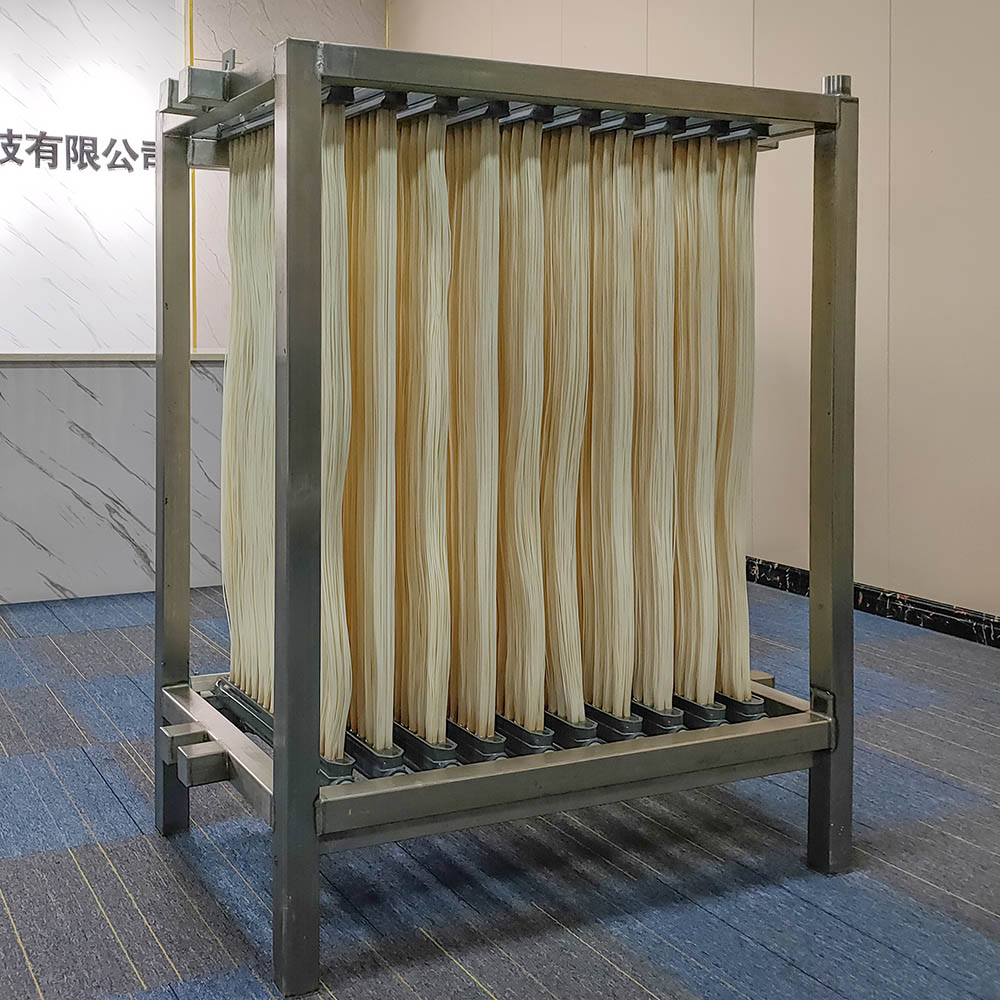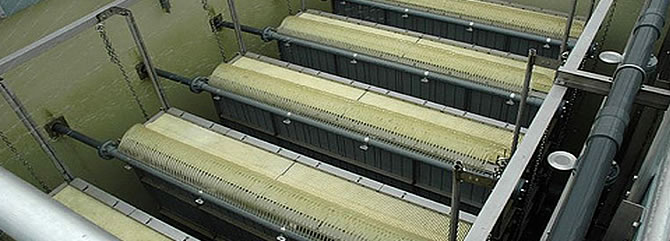Membrane Bioreactors Discussed: Effective Solutions for Tidy Water
Membrane bioreactors (MBRs) have become a sophisticated remedy for addressing the pressing difficulties of wastewater therapy. By integrating biological procedures with innovative membrane filtration, MBRs not only improve the top quality of cured water however also reduce the spatial requirements of treatment facilities. As ecological issues intensify, the role of MBR technology in advertising sustainable water management becomes significantly considerable. The complexities of their procedure, benefits, and possible applications merit a closer examination to completely comprehend their influence on the future of water treatment.

What Are Membrane Layer Bioreactors?
Membrane bioreactors (MBRs) are advanced wastewater treatment systems that incorporate organic degradation processes with membrane layer purification innovation. This assimilation permits for the efficient removal of impurities from water, making MBRs a recommended option in numerous applications, including community wastewater treatment and industrial effluent management.

Among the critical advantages of MBRs is their capacity to generate top quality effluent, usually appropriate for reuse in watering or commercial processes. Furthermore, MBRs call for a smaller impact compared to standard treatment systems, making them perfect for city setups where area might be restricted.
Additionally, MBRs can properly deal with differing influent loads and are less vulnerable to the impacts of hazardous shocks. These attributes add to their expanding popularity as a lasting solution for attending to the increasing demand for tidy water while reducing environmental impacts.
Exactly How Membrane Layer Bioreactors Work
While the procedure of membrane bioreactors (MBRs) may appear complicated, it essentially rotates around the synergy between organic procedures and membrane layer filtering. MBRs incorporate a biological treatment procedure, usually triggered sludge, with a membrane layer separation unit to deal with wastewater successfully.
In an MBR system, wastewater is initial presented right into a bioreactor where microorganisms deteriorate raw material and various other impurities. The biological task lowers the concentration of pollutants while advertising the growth of biomass. Following this biological treatment, the blended alcohol is subjected to membrane purification, which can be microfiltration or ultrafiltration, relying on the preferred effluent high quality.
The membranes act as a physical barrier, permitting water and little solutes to pass while maintaining suspended solids and larger molecules. This enables the system to maintain a high focus of biomass within the activator, boosting the therapy performance.
Furthermore, the constant splitting up of treated water from the biomass facilitates a portable layout and minimizes the footprint of the treatment center. On the whole, the combination of organic degradation and membrane purification in MBRs leads to reputable and reliable wastewater treatment, making certain high-grade effluent suitable for different applications.
Advantages of MBR Innovation
One of the key benefits of membrane layer bioreactor (MBR) modern technology is its capacity to generate premium effluent with a substantially minimized impact compared to standard wastewater therapy methods. MBR systems successfully combine biological treatment and membrane layer filtration, leading to remarkable removal of impurities, consisting of put on hold solids, virus, and organic matter. This ability causes effluent that typically meets or goes beyond strict regulatory standards for reuse and discharge.
Furthermore, MBR modern technology enables greater biomass focus, which enhances the therapy effectiveness and reduces the required reactor quantity. This small layout is specifically valuable in urban locations where space is restricted. The operational flexibility of MBR systems also means they can adapt to varying influent high qualities and circulation rates, making them suitable for a variety of applications.
Furthermore, the reduced sludge manufacturing connected with the original source MBR processes adds to lower operational and upkeep prices. The membrane layers function as a physical barrier, lessening the danger of obstructing and making it possible for longer operational periods in between cleansing. Overall, the advantages of MBR modern technology make it an eye-catching option for sustainable wastewater therapy, resolving both environmental worries and the requirement for efficient source management.
Applications of Membrane Bioreactors
With their convenience and effectiveness, membrane bioreactors (MBRs) find applications throughout different fields, consisting of metropolitan wastewater therapy, industrial procedures, and also water recovery. In local settings, MBRs supply a small service for dealing with wastewater, efficiently removing pollutants while all at once generating top notch effluent that satisfies rigorous governing standards. This makes them especially ideal for areas with restricted room.
In commercial applications, MBR modern technology is used for treating process water, specifically in industries such as food and drink, pharmaceuticals, and petrochemicals. These sectors take advantage of MBRs' ability to handle high organic lots and their performance in recouping valuable sources from wastewater, such as nutrients and water.
Furthermore, MBRs play an important duty in water recovery initiatives, allowing the reuse of treated wastewater for irrigation, commercial processes, and even as potable water after additional therapy (Membrane Bioreactor). Their effectiveness in removing contaminants and microorganisms makes them a reliable selection for ensuring water high quality in numerous reuse applications
Future of Water Therapy Solutions
The future of water treatment options is poised for transformative developments driven by technological innovation and boosting environmental awareness. As international water shortage comes to be a pressing issue, new methodologies, including membrane layer bioreactor (MBR) systems, are readied to play a crucial duty in boosting the efficiency and sustainability of water treatment procedures.
Arising innovations such as expert system and device understanding are anticipated to enhance treatment operations, enabling real-time tracking and anticipating upkeep. This will certainly improve the general integrity and performance of water treatment facilities. Innovations in membrane layer products, such as graphene and nanofiltration, promise to enhance permeation prices and minimize fouling, my blog leading to reduced power usage and functional costs.
In addition, the integration of renewable resource sources into water therapy plants will add to greener techniques. The round economy version will certainly also gain grip, motivating the recovery of useful sources from wastewater, such as nutrients and energy.
Verdict

Membrane layer bioreactors (MBRs) have emerged as a sophisticated remedy for Discover More resolving the pushing challenges of wastewater treatment. By incorporating biological processes with advanced membrane filtration, MBRs not only boost the quality of cured water however likewise reduce the spatial requirements of therapy centers.One of the vital advantages of membrane layer bioreactor (MBR) technology is its ability to create high-quality effluent with a considerably decreased impact contrasted to standard wastewater treatment techniques.With their versatility and efficiency, membrane bioreactors (MBRs) discover applications throughout numerous industries, including local wastewater therapy, commercial procedures, and also water improvement.In conclusion, membrane bioreactors stand for a significant development in wastewater therapy modern technology, integrating biological processes with efficient membrane filtering to generate premium effluent.